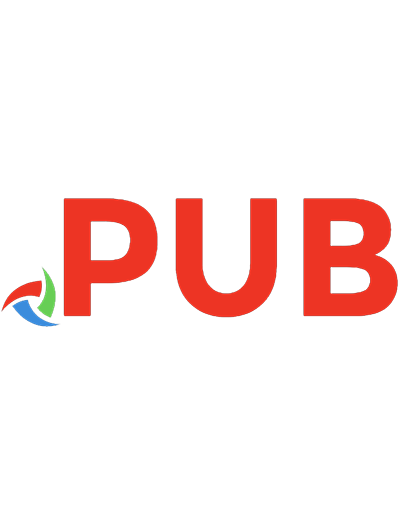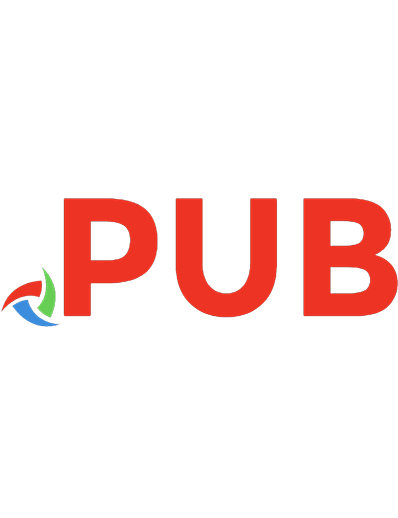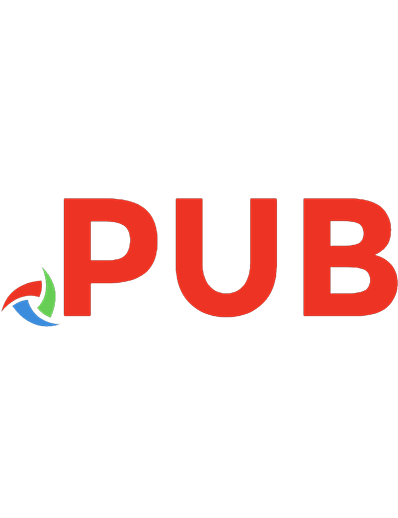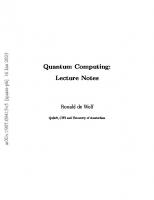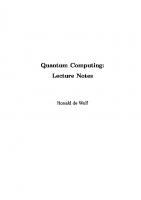Quantum Computing in Action 1617296325, 9781617296321
Quantum computing is on the horizon and you can get started today! This practical, clear-spoken guide shows you don’t ne
198 40 5MB
English Pages 264
Table of contents :
Quantum Computing in Action
brief contents
contents
preface
acknowledgments
about this book
Who should read this book?
How this book is organized: a roadmap
About the code
liveBook discussion forum
about the author
about the cover illustration
Part 1—Quantum computing introduction
1 Evolution, revolution, or hype?
1.1 Expectation management
1.1.1 Hardware
1.1.2 Software
1.1.3 Algorithms
1.1.4 Why start with QC today?
1.2 The disruptive parts of QC: Getting closer to nature
1.2.1 Evolutions in classical computers
1.2.2 Revolution in quantum computers
1.2.3 Quantum physics
1.3 Hybrid computing
1.4 Abstracting software for quantum computers
1.5 From quantum to computing or from computing to quantum
Summary
2 “Hello World,” quantum computing style
2.1 Introducing Strange
2.2 Running a first demo with Strange
2.3 Inspecting the code for HelloStrange
2.3.1 The build procedures
2.3.2 The code
2.3.3 Java APIs vs. implementations
2.4 Obtaining and installing the Strange code
2.4.1 Downloading the code
2.4.2 A first look at the library
2.5 Next steps
Summary
3 Qubits and quantum gates: The basic units in quantum computing
3.1 Classic bit vs. qubit
3.2 Qubit notation
3.2.1 One qubit
3.2.2 Multiple qubits
3.3 Gates: Manipulating and measuring qubits
3.4 A first [quantum] gate: Pauli-X
3.5 Playing with qubits in Strange
3.5.1 The QuantumExecutionEnvironment interface
3.5.2 The Program class
3.5.3 Steps and gates
3.5.4 Results
3.6 Visualizing quantum circuits
Summary
Part 2—Fundamental concepts and how they relate to code
4 Superposition
4.1 What is superposition?
4.2 The state of a quantum system as a probability vector
4.3 Introducing matrix gate operations
4.3.1 The Pauli-X gate as a matrix
4.3.2 Applying the Pauli-X gate to a qubit in superposition
4.3.3 A matrix that works for all gates
4.4 The Hadamard gate: The gate to superposition
4.5 Java code using the Hadamard gate
Summary
5 Entanglement
5.1 Predicting heads or tails
5.2 Independent probabilities: The classic way
5.3 Independent probabilities: The quantum way
5.4 The physical concept of entanglement
5.5 A gate representation for quantum entanglement
5.5.1 Converting to probability vectors
5.5.2 CNot gate
5.6 Creating a Bell state: Dependent probabilities
5.7 Mary had a little qubit
Summary
6 Quantum networking: The basics
6.1 Topology of a quantum network
6.2 Obstacles to quantum networking
6.2.1 Classical networking in Java
6.2.2 No-cloning theorem
6.2.3 Physical limitations on transferring qubits
6.3 Pauli-Z gate and measurement
6.3.1 Pauli-Z gate
6.3.2 Measurements
6.4 Quantum teleportation
6.4.1 The goal of quantum teleportation
6.4.2 Part 1: Entanglement between Alice and Bob
6.4.3 Part 2: Alice’s operations
6.4.4 Part 3: Bob’s operations
6.4.5 Running the application
6.4.6 Quantum and classical communication
6.5 A quantum repeater
Summary
Part 3—Quantum algorithms and code
7 Our HelloWorld, explained
7.1 From hardware to high-level languages
7.2 Abstractions at different levels
7.3 Other languages for quantum computing simulators
7.3.1 Approaches
7.3.2 Resources for other languages
7.4 Strange: High-level and low-level approaches
7.4.1 Top-level API
7.4.2 Low-level APIs
7.4.3 When to use what
7.5 StrangeFX: A development tool
7.5.1 Visualization of circuits
7.5.2 Debugging Strange code
7.6 Creating your own circuits with Strange
7.6.1 Quantum arithmetic as an introduction to Shor’s algorithm
7.6.2 Adding two qubits
7.6.3 Quantum arithmetic with a carry bit
7.6.4 Next steps
7.7 Simulators, cloud services, and real hardware
Summary
8 Secure communication using quantum computing
8.1 The bootstrap problem
8.1.1 Issues with sending bits over a network
8.1.2 One-time pad to the rescue
8.1.3 Sharing a secret key
8.2 Quantum key distribution
8.3 Naive approach
8.4 Using superposition
8.4.1 Applying two Hadamard gates
8.4.2 Sending qubits in superposition
8.5 BB84
8.5.1 Confusing Eve
8.5.2 Bob is confused, too
8.5.3 Alice and Bob are talking
8.6 QKD in Java
8.6.1 The code
8.6.2 Running the application
Summary
9 Deutsch-Jozsa algorithm
9.1 When the solution is not the problem
9.2 Properties of functions
9.2.1 Constant and balanced functions
9.3 Reversible quantum gates
9.3.1 Experimental evidence
9.3.2 Mathematical proof
9.4 Defining an oracle
9.5 From functions to oracles
9.5.1 Constant functions
9.5.2 Balanced functions
9.6 Deutsch algorithm
9.7 Deutsch-Jozsa algorithm
9.8 Conclusion
Summary
10 Grover’s search algorithm
10.1 Do we need yet another search architecture?
10.1.1 Traditional search architecture
10.1.2 What is Grover’s search algorithm?
10.2 Classical search problems
10.2.1 General preparations
10.2.2 Searching the list
10.2.3 Searching using a function
10.3 Quantum search: Using Grover’s search algorithm
10.4 Probabilities and amplitudes
10.4.1 Probabilities
10.4.2 Amplitudes
10.5 The algorithm behind Grover’s search
10.5.1 Running the example code
10.5.2 Superposition
10.5.3 Quantum oracle
10.5.4 Grover diffusion operator: Increasing the probability
10.6 Conclusion
Summary
11 Shor’s algorithm
11.1 A quick example
11.2 The marketing hype
11.3 Classic factorization vs. quantum factorization
11.4 A multidisciplinary problem
11.5 Problem description
11.6 The rationale behind Shor’s algorithm
11.6.1 Periodic functions
11.6.2 Solving a different problem
11.6.3 Classic period finding
11.6.4 The post-processing step
11.7 The quantum-based implementation
11.8 Creating a periodic function using quantum gates
11.8.1 The flow and circuit
11.8.2 The steps
11.9 Calculating the periodicity
11.10 Implementation challenges
Summary
Appendix A—Getting started with Strange
A.1 Requirements
A.2 Obtaining and installing the demo code
A.3 The HelloStrange program
Running the program
Appendix B—Linear algebra
B.1 Matrix-vector multiplication
B.2 Matrix-matrix multiplication
B.3 Tensor product
index
A
B
C
D
E
F
G
H
I
J
L
M
N
O
P
Q
R
S
T
U
V
X


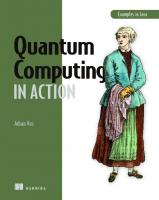
![Quantum Computing In Action [247]](https://dokumen.pub/img/200x200/quantum-computing-in-action-247.jpg)
